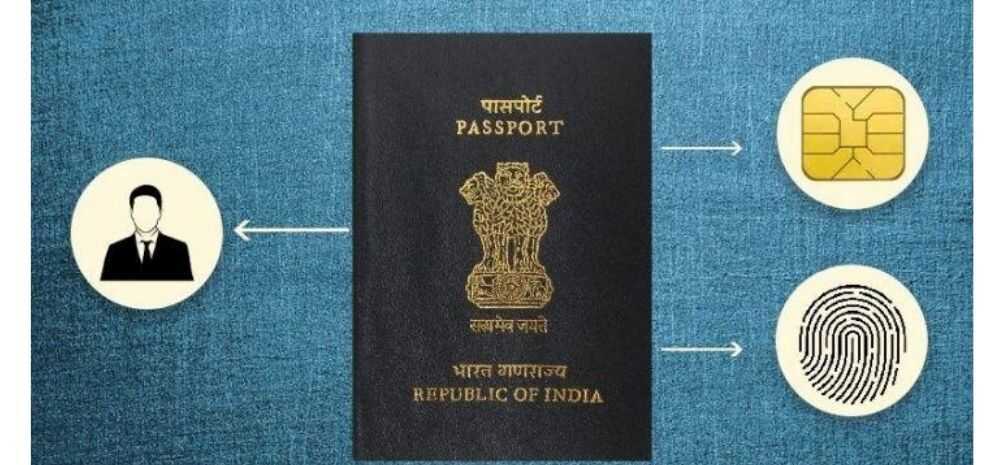7 Crore+ Customers

Affordable Premium

7 Crore+ Customers

Affordable Premium



It’s a fact that you can save a significant amount of time while you travel abroad with the help of biometric passports. With these, you no longer need to wait in queues for long periods, as it gets examined within a matter of seconds. Moreover, these are much safer options than regular passports.
It has an inbuilt RFID chip allows it to store a lot more data while maintaining the highest levels of privacy and security. These more recent generations of documents are dependable and convenient, and they offer a more simplified travel experience.


A biometric passport also called an e-Passport or a digital passport contains an integrated microchip containing all of your personal data. It has the international biometric emblem at the bottom of the front cover and otherwise has the same appearance as a conventional passport.
E-Passports were introduced in 2006 to combat the growing threat of identity theft and terrorism. The data saved electronically in the passport chip is authenticated using public key infrastructure (PKI). It is expected to make it costly and impossible to fake when all security measures are properly and completely applied.
The E-passport remains valid for 5 to 10 years and depends on the applicant's age. There are 41 security features in these passports. A few features of an e-passport are as follows:
A tiny silicon chip with 64 kilobytes of memory is integrated into the jacket of the e-passports. This chip contains all important security-related information, such as the applicants’ digitally signed personal information. The front and back covers of the passports are probably thicker, and reading them might take a few more seconds.
These new passports can potentially store up to 30 visits. Additionally, they will each have a distinctive digital signature that can be easily validated with a certificate.
When someone makes a passport authentication attempt with malicious intent, such as tampering with the chip, the system will be able to detect it and will fail immediately.
In India, microchip-based e-passports integrate cutting-edge technology into the passport booklet. The procedures listed below can be used to apply for an e-passport:
Step 1: Visit the Passport Seva website official webpage.
Step 2: If this is your first visit, select 'New User Registration'. Enter your information and validate your phone number. Current users should use their login credentials to log in.
Step 3: Finish any last-minute registration requirements, such as selecting security questions or submitting a photo.
Step 4: Choose if you want to renew your current passport or apply for a new one.
Step 5: Fill out the application form with all of the requested personal information. After uploading the necessary files, submit the form.
Step 6: Complete the online payment using a debit card, credit card, or net banking. Then, schedule a meeting at Passport Seva Kendra.
Step 7: At the Passport Seva Kendra or Passport Office, print the acknowledgement receipt or use the SMS verification.
Since 2010, if you've requested a new passport, it will be biometric. The front page of your passport is the ideal place to start if you're unsure. If there is a little camera-shaped mark near the bottom, your passport is biometric.
You can't even feel the ridges or lumps in a biometric passport since the technology has become so sophisticated and microscopic.
Besides knowing the meaning of biometric passports, one should also know its benefits. A few of the benefits of biometric passports are:
Adding more security mechanisms will lessen the risk of identity fraud.
It incorporates biometric data like fingerprints, iris, and faces. These details aid in the identification of e-passport holders.
It aids in the discovery of fake documents by using biometrics.
Consequently, e-passports are exceedingly challenging to change. As a result, they limit the entry of unauthorised people into any country using false documents.
It defends citizens' right to privacy and ensures their privacy rights are maintained by securely handling biometric data.
If the chip is bent, the system will receive a warning and cannot authenticate the passport.
Uses biometric data (fingerprints, iris scans, facial recognition) to identify passport holders accurately.
Difficult to alter or manipulate, thereby limiting unauthorised access using false documents.
Facilitates quicker and more efficient processing at immigration checkpoints.
It adheres to international standards, making it widely accepted for travel across different countries.
Enables automated border control systems to verify identities swiftly and accurately.
Designed to remain effective and secure amidst technological advancements and evolving threats.
A biometric passport, or e-passport, integrates advanced biometric technology compared to standard passports. The table below further explains the basic differences between the two:
These passports enhance security and facilitate international travel by storing biometric data and other key details in a secure electronic format. The following are the details on an e-passport that you can find:
The chip will have the holder's photograph and fingerprints on it
The embossed holographic graphics on the electronic passport will change colour when moved under the light
Your biometric data
Issuance and expiry dates
Although a biometric passport cannot be completely authenticated, it is difficult to steal, change, or fabricate because of the various security protocols and safeguards in place. Among them are the following:
These challenges underscore the complex landscape surrounding the implementation and use of biometric e-passports in modern travel systems. Follow the table below to know in details:
Using a biometric passport generally entails a low risk, but there are a few considerations to keep in mind:
Biometric passports store personal biometric data such as fingerprints or facial scans. This data could be accessed or misused if adequate security measures are not in place.
Like any electronic system, biometric passports could be vulnerable to hacking or unauthorised access. However, modern passports employ encryption and security protocols to minimise this risk.
Concerns exist regarding the protection and storage of biometric data. Governments and organisations handling this data must adhere to strict regulations to safeguard against breaches.
Although biometric authentication is generally reliable, there have been instances of false positives or negatives. This could cause inconvenience or delays for travellers.
The technology used in biometric passports is generally robust, but occasional technical issues or failures may affect the passport's usability.
Now that you know what a biometric passport is, you understand the significance of an e-passport for both the government and the general public. This electronic chip-embedded passport will improve security and speed up the passport verification process when travelling. Biometric passports are the future; soon, everyone will use them to their benefit, bridging the gap between technology and progress.